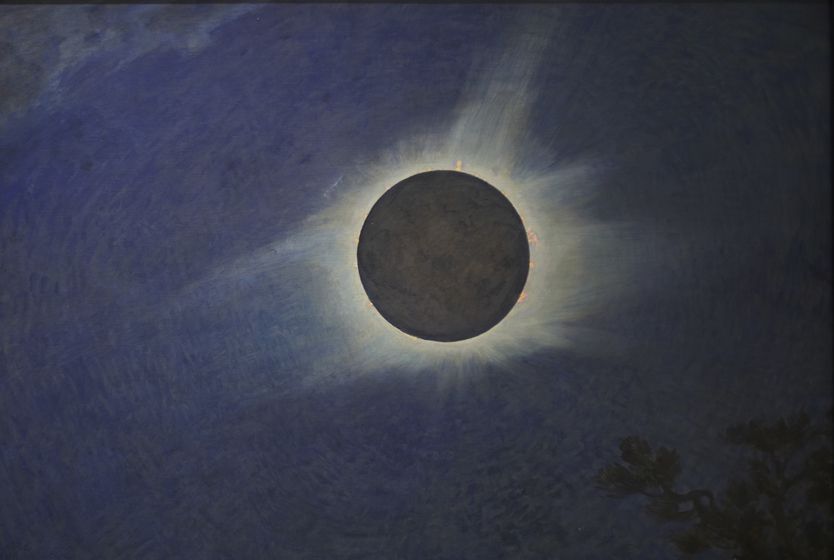Eclipse of 1925, Connecticut-New York
Howard Russell Butler, American, 1856—1934
Solar Eclipse, Connecticut-New York, 1925
Oil on canvas, right panel of triptych
Princeton University, gift of H. Russell Butler Jr.
PP352
Butler had been invited to observe the 1925 eclipse from the Van Vleck Observatory of Wesleyan University but chose instead to position himself on the roof of the Arrigoni Hotel in Middletown, Connecticut, from which he could see in two directions: toward the approaching shadow and toward the sun. Butler used a cupola on the roof as the vertical surface on which he nailed two pieces of cardboard, which he had prepared in advance with circles to represent the disk of the moon. On one card he had prepared a number of lines going through the center of the circle and placed forty-five degrees apart. Along these lines he could make notes as to the brightness of the corona along each of the directions, which would allow him to later make a painting of the corona as he had observed it. He could also note the perceived color of the sky and of the moon’s disk during the eclipse, which lasted only 110 seconds. Butler used the second card after the eclipse, noting other features that remained in his mind.

Butler Papers, Archives of American Art, Smithsonian Institution
Butler Papers, Archives of American Art, Smithsonian Institution
The text below is from a pamphlet, The Three Solar Eclipses Seen in the United States in 1918, 1923, and 1924: The First Examples of American Museum Methods of Education Applied to Astronomy, printed by the American Museum of Natural History on the occasion of the gift of the eclipse triptych for the proposed Hall of Astronomy, which Butler designed but which was never built. Most likely, Butler, who was an advisor to the museum at this time, provided the text about the eclipses:
This eclipse reached totality at 9:10 a.m., and consequently the long axis of the corona is inclined to the left. The time was near the period of maximum sun-spots, and not only was the outline of the corona surprising to the astronomers, but some of the streamers were much longer than was expected. The prominences, while many (19 were recorded by the camera), were so small that they could not be seen by the naked eye.
Butler Family Papers, Manuscripts Division, Department of Rare Books and Special Collections, Princeton University Library
